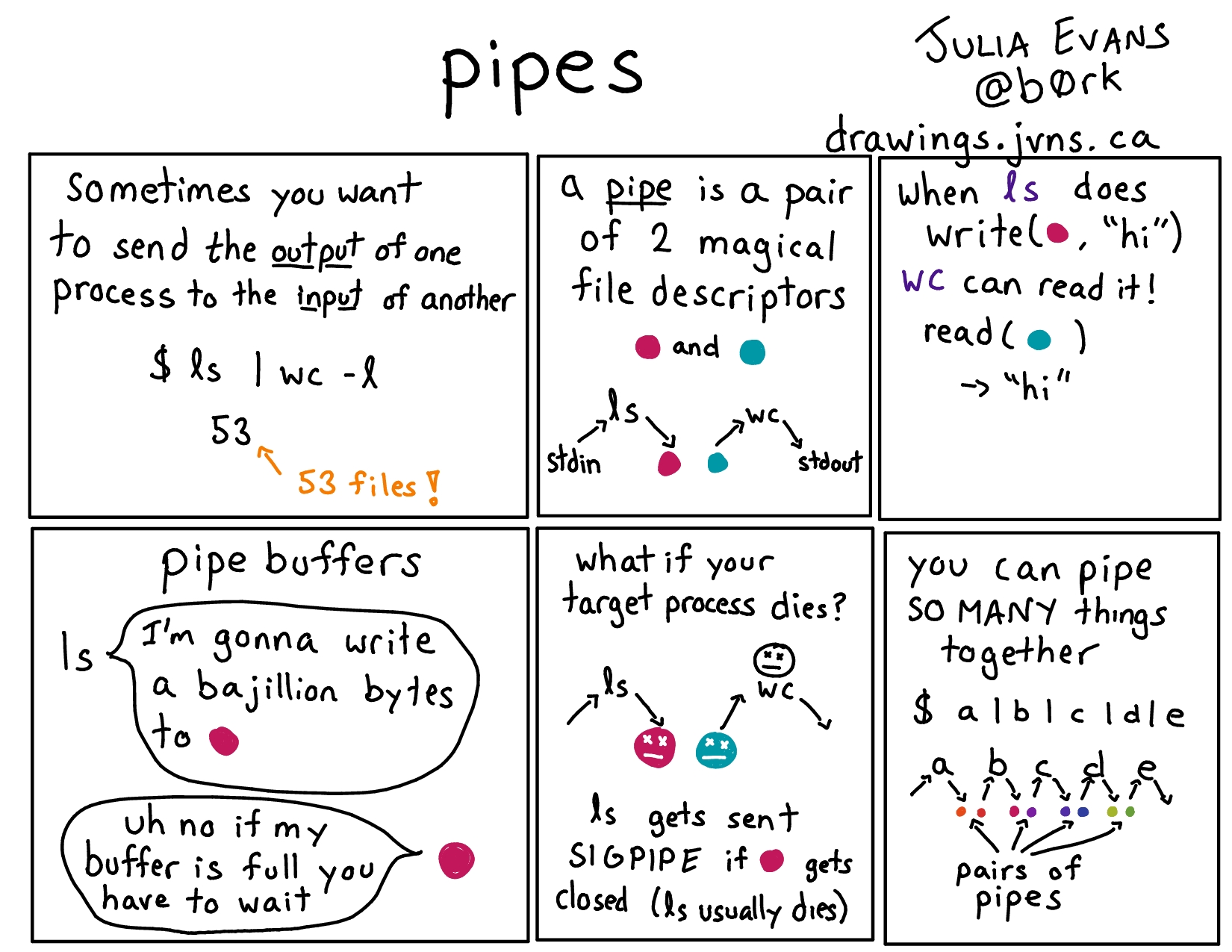Shell
When the shell is started, the OS provides three files for it to work with: stdin, stdout and stderr. When run from the terminal, stdin is connected to the keyboard input. What you write is passed to the terminal. This happens via a file called tele typewriter or tty. stdout and stderr is connected to tty too, this is why the output and errors of any command you run show up in the terminal.

Every terminal you open gets assigned a new file via tty, so that commands from one terminal do not clobber another. You can find out the file your terminal is attached to via the tty command:
$ tty
/dev/pts/0Pipes

Pipe, |, bridges two processes together. It represents the system call to pipe() and all it does is redirect stdin and stdout for processes.

The image above is a slight simplification to explain pipe redirection:
The top bash forks another bash connected to
tty, which produces the output oflsSince the top bash was forked from the lower, it inherited the file descriptors of the lower one
The lower bash did not fork a new process because
echois a builtin command

Note that stderr is always routed directly to the tty. You can switch streams before the pipe and redirect stderr instead of stdout to the pipe.
Variables
Local variables are ones you can create in a shell. They are local to the shell, thus not passed to children (remember, every non-builtin command is in a new shell which does not have these local variables).
Environment variables (env vars) are like global variables. They are passed to children. However, changes to the environment variables in child process can not be passed to the parent (remember, there is no communication between child and parent except the exit code).
References
Last updated